HOMEBREW QRP IS GUD 4 U GALLERY
Contributions welcome:
[email protected]
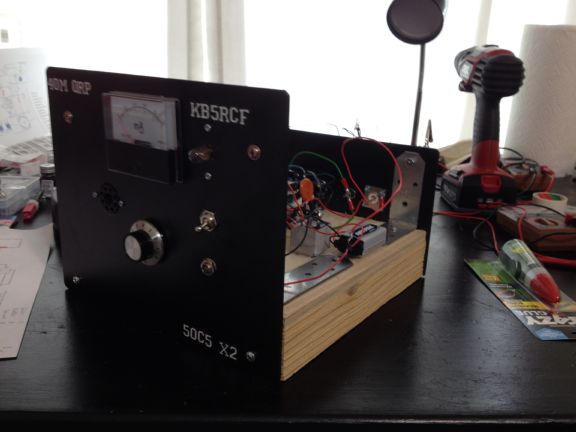
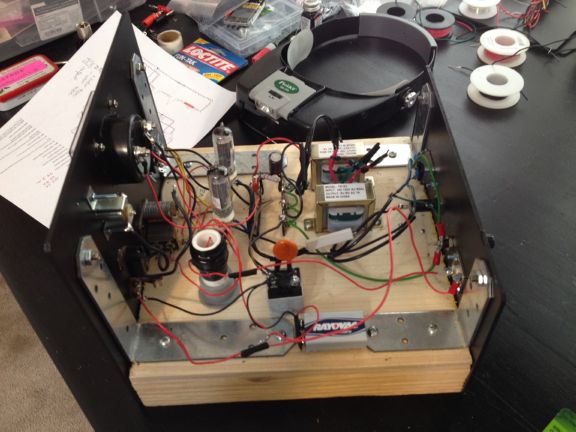
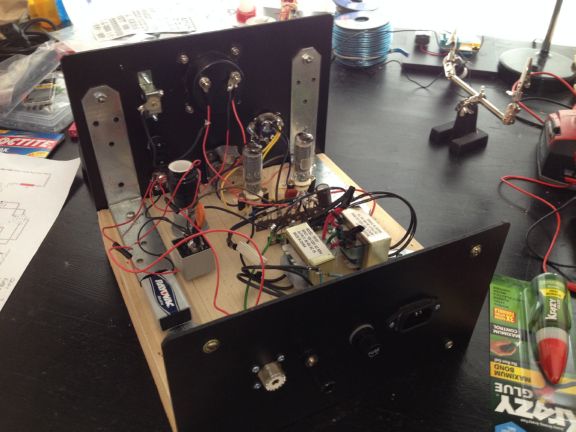
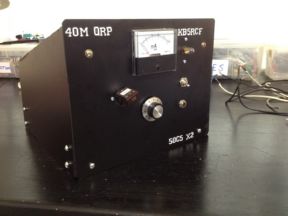
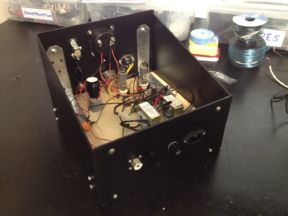
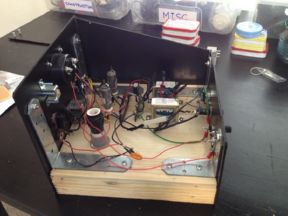
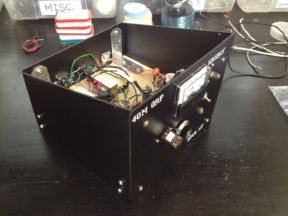
Dave, KB5RCF, built this handsome version of the
6-watt 2-tube transmitter for 40 meters in 2017. Views both before and after protective sides were added are portrayed.
He also writes of a transceiver project he constructed shown below: "The photos show my little 49'er Chinese XCVR kit which I have recently installed into a re-purposed plastic box. I have made a few contacts with this rig using an end-fed sloping wire antenna about 50 feet long and about 15 feet above ground using a QRP MFJ tuner. It has 500mW out with 12 VDC in, despite what the 'manufacturer' states as being 3 W RF out. However, it did bag me my first 1000 miles per watt award (in fact � 1644 miles/watt). It is crystal controlled at 7.023 MHz with a 3 KHz VXO, but I wish I had had the foresight to have substituted the crystal frequency.�
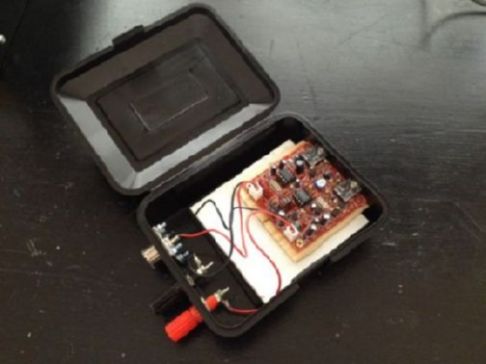
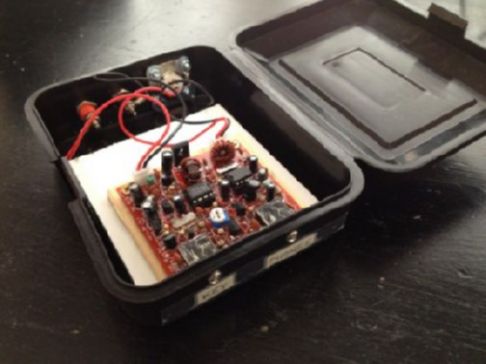
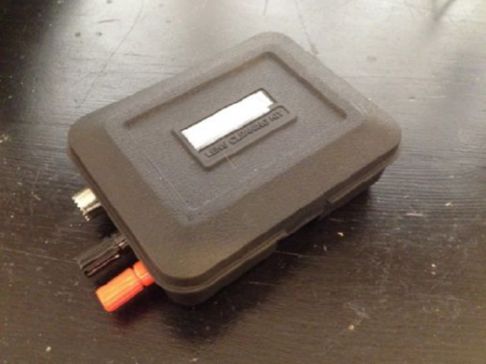
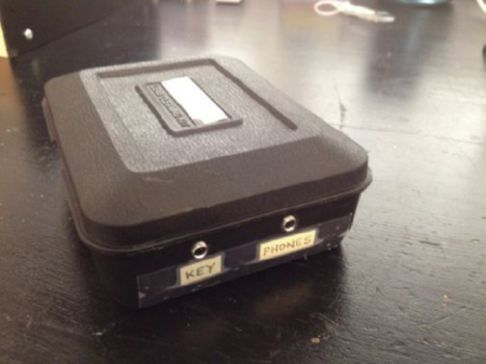
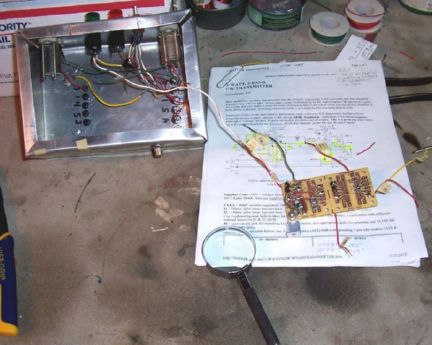
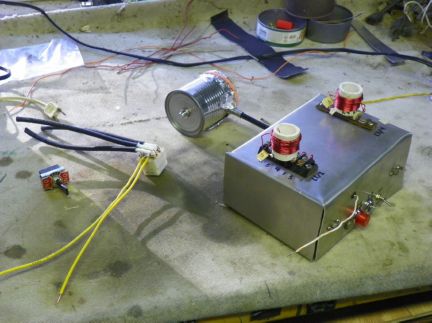
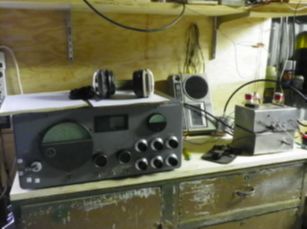
In 2012 KJ6ZEL, [email protected],
built a 40-meter version of the 3-watt 2-band CW transmitter
using PVC pipe instead of plug-in coil forms.
Here are photos of it being constructed, almost done
[with tincan low-pass filter and unfinished T/R switch],
and ready-to-go with his beautiful vintage Hallicrafters SX-43 receiver.
Below are shots of an elegant 160-meter 1-watt "Super Mite" version of the 500mW CW transmitter that Paul, AE5VM, has built.
The added LED certainly makes it sparkle!
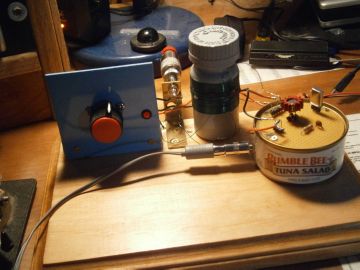
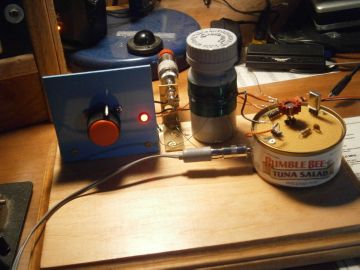
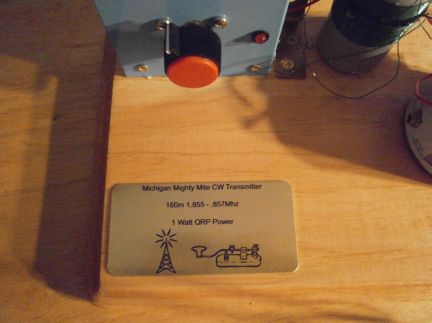
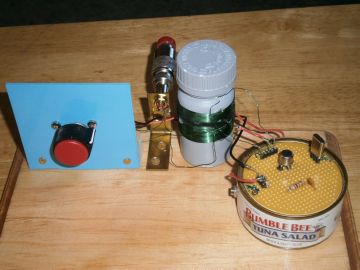
Above: same transmitter before LED modification.
Below are photos of a single-unit station also built by Paul, AE5VM, using another Michigan Mighty Mite in the transmitter. The sections of this "transceiver" are a Ten Tec 1056 any-band receiver for 160m, a Michigan Mighty Mite for 160m, a QRPme kit Tuna Helper TRX Switch, and a QRPme power supply.
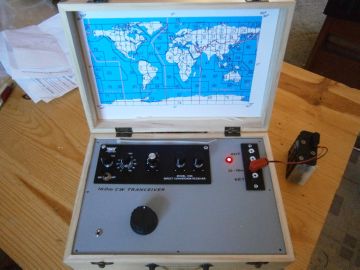
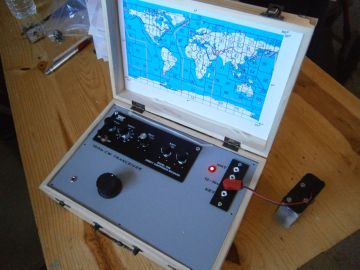
A recent (2017)
40-meter version of the Michigan Might Mite also from Paul, AE5VM, is shown below. This one has an added low-pass filter for cleaner signal. A video of it in action is on YouTube at https://www.youtube.com/watch?v=tIRx5OpOiUY
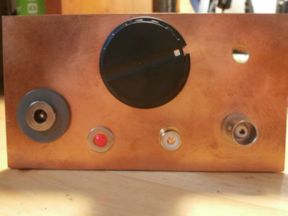
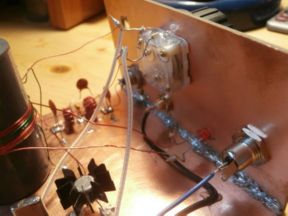
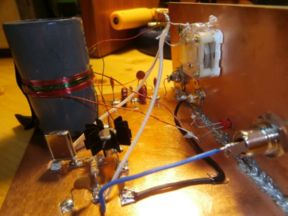
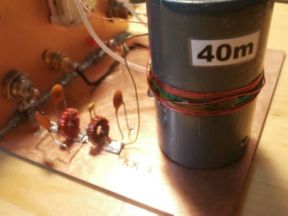
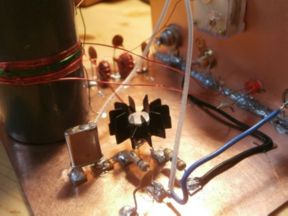
"Jim", [email protected], is currently (2013) an ESL Instructor
in Harbin, China. He writes:
"I am still learning Morse Code and finding other projects to build like low-pass filters, another
40 meter using FETs, agc circuit and a noise limiter for my headphones as am tired of painful blasts
from my cheap HR-40 Ramsey receiver. It seems almost ridiculous to be so interested in something that
I have to wait another year before I can really participate in as that is when I will return to US
and get my ham license. But I can learn in the meantime and listen to ham activity over here in China.
Also, homebrewing helps me understand the license material firsthand." He adds: "I have to say that Hams
are some of the nicest folks I've never met. They always respond to my novice questions with respect
and useful information."
Jim has built a couple versions of the "Michigan Mighty Mite"
500mW CW transmitter; one is shown below left.
A view of the school where he teaches is at right.
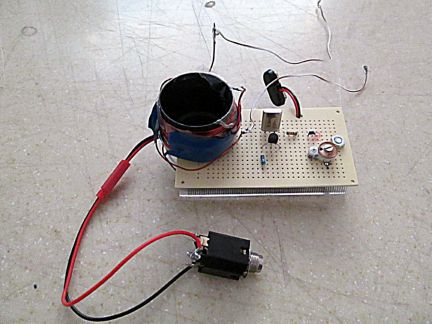

Below are two photos of another version of the 500mW CW transmitter built
by Jim. He reports that it was "built using 2n2222a transistor and coil wound on pill bottle.
Cased in chinese tea tin box. Puts out about 100 mW on 9 volts."
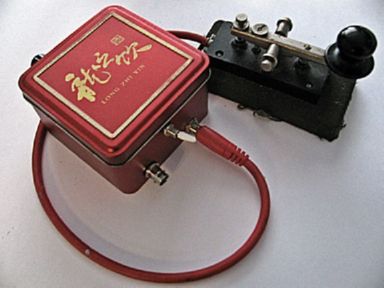
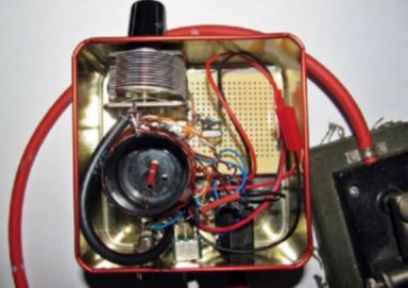
Here are some of Jim's projects from other sources - below is a "Curruria 40 Transmitter:
Built using 2n2222a transistor and a coil wound on a plastic jump rope handle
(design calls for 2N3904 and a blue 5.6 inductor rather than wound coil).
Mine puts out about 100 mW on 9 volts. Cased in a Chinese tea tin box. No variable capacitor.
I had to make change from schematic to ground antenna to circuit with a cap to get it to
work - not sure why that is."
Link:
http://py2ohh.w2c.com.br/trx/curruira/curruira.htm

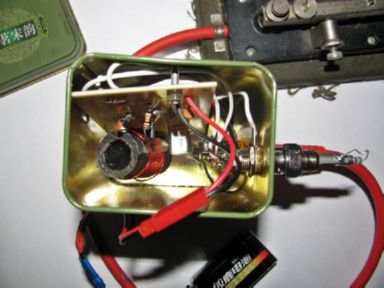
Below: "Antenna Tuner: Built into chinese tea tin box. Not a great job on winding the coil but the
tuner still really increases effectiveness of a 20 meter long wire antenna running outside along my
apartment building using my Tecsun Pl-660 receiver."
Link:
http://www.seekic.com/circuit_diagram/Basic_Circuit/SIMPLE_ANTENNA_TUNER.html
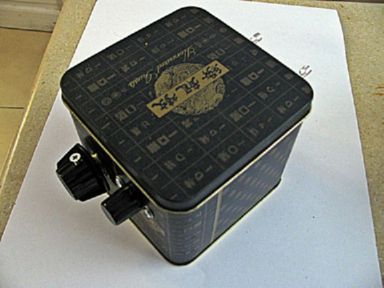
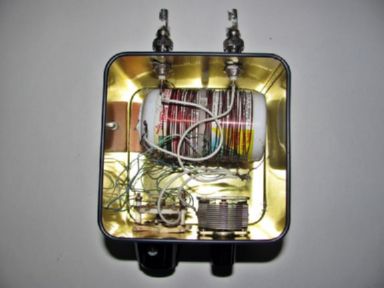
Below: "Field Strength Meter: Built into an old battery charger wall wart case.
Pot control is kind of redundant since I use the volt meter. I use this
to see if my rc transmitters are working and to probe other rf sources just out of interest.
It even detects the sun's rf.
Using germanium diodes but want to improve detection with some IN5711s".
Link:
http://www.comportco.com/~w5alt/projects/fsmcircuit.html
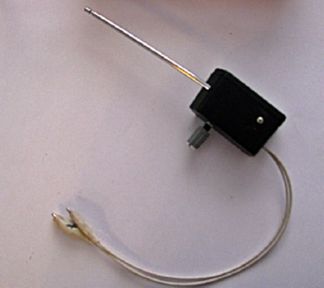
BELOW LEFT: "RF Probe: Built in a jump rope handle as a watt meter.
Combined your schematics at:
http://www.qsl.net/kc6wdk/QRP/wattmeter.htm (with)
http://n5ese.com/rfprobe1.htm" .
BELOW RIGHT: "Bumper Switch Keyer: use a bumper switch as a keyer
for coding practice while I am laying down."
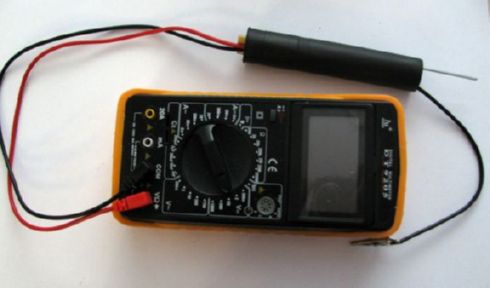
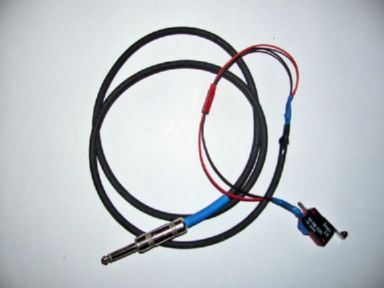
Though also not projects featured on HOMEBREW QRP IS GUD 4 U, the following experimental
projects developed by "RLW", [email protected], are so interesting they been included with
permission. Comments are by "RLW".
BI-DIRECTIONAL TRANSCEIVER USING MPF102 J-FETS
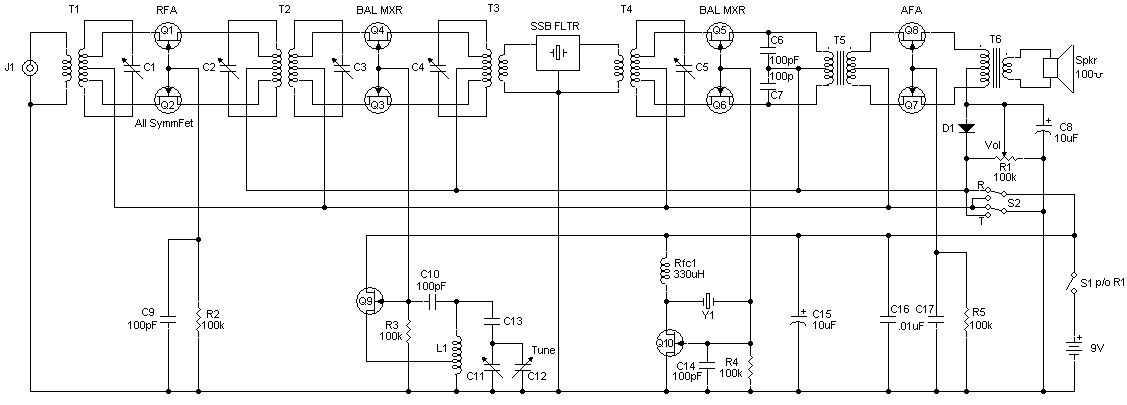
"It is a receiver, and a transmitter, it's Bidirectional.
Please observe the function of S2 as it applies +VDD and -VSS (Ground) to the Gain Stages.
In a symmetrical J-Fet , +VDD/-VSS placement determine which Fet element functions as the Drain and Source respectively. The MPF102 used here is one of a group of Symmetrical J-Fets, like most of the J200 and J300 series, because the Drain/Source elements are interchangeable.
Therefore, as designed here (Class AB2), in a Push Pull Fet device (ie Grounded Gate Push-Pull Pair) switching +VDD and -VSS from one side to the other of the device switches the signal flow direction.
T1 through T4 are air-core types designed to meet the frequency and load impedance requirements desired while tapped-down and some what loosely coupled minimizing the Ground-Gate "Source-loading" effects on Q.
The first working prototype operated on 10 Meters with a 15Mhz surplus clock crystal CO and a 3Khz four-pole crystal ladder filter borrowed from an old design. 13Mhz VFO.
Note: the AFA will suffer source-loading which will affect stage-gain in that direction, so, the AFA, T5 & T6, were optimized for receive mode power to the speaker (because it doesn't take much audio power to unbalance the mixer and make DSB in transmit).
So, that's it... Bidirectional....."
ALBACORE TRANSCEIVER
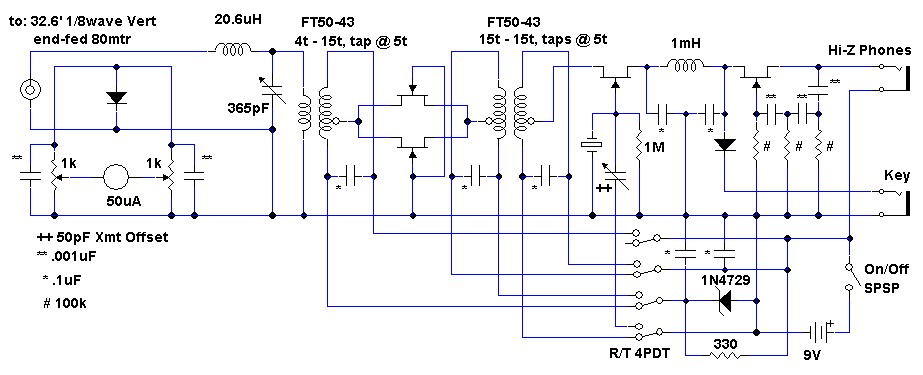
"I'm working (for a while now) on a XCVR I call the Albacore; self-contained Tuna-type
3 FET 3W CW with 700Hz regen-audio filtering and sidetone...
this is the consept schematic I started with, stacked-diode biased now."
80M MILLIWATT TRANSMITTER
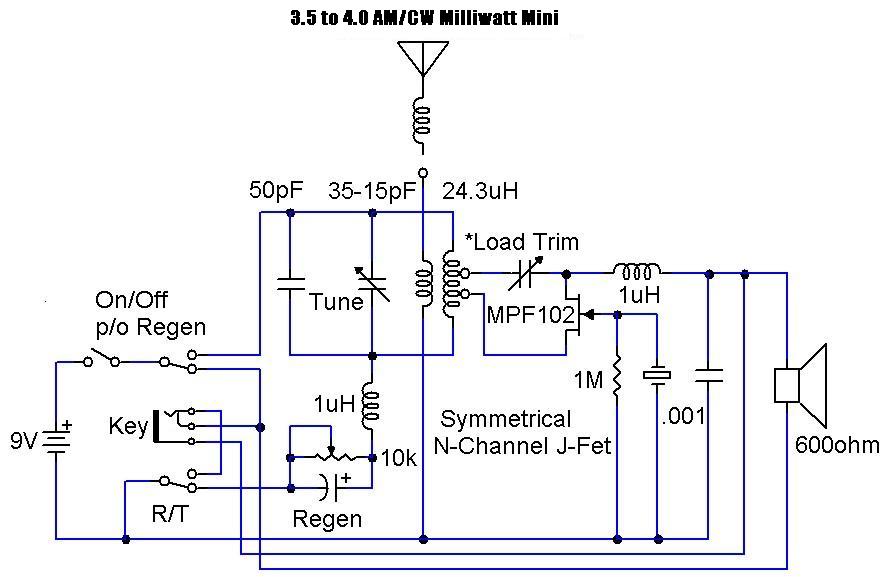
"One of my first bi-di Pirate Toys (80s) was a 80Mtr 1/2W one-transistor XCVR,
fit into my youngest kid's discarded Archer Science Fair case... it worked."
HOME





















